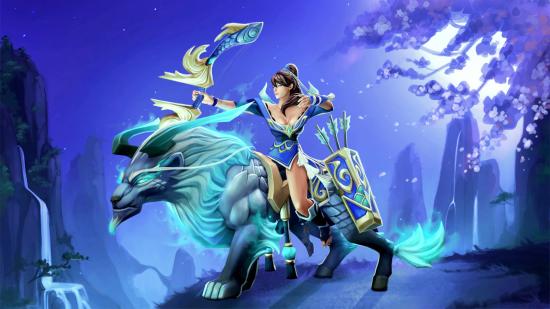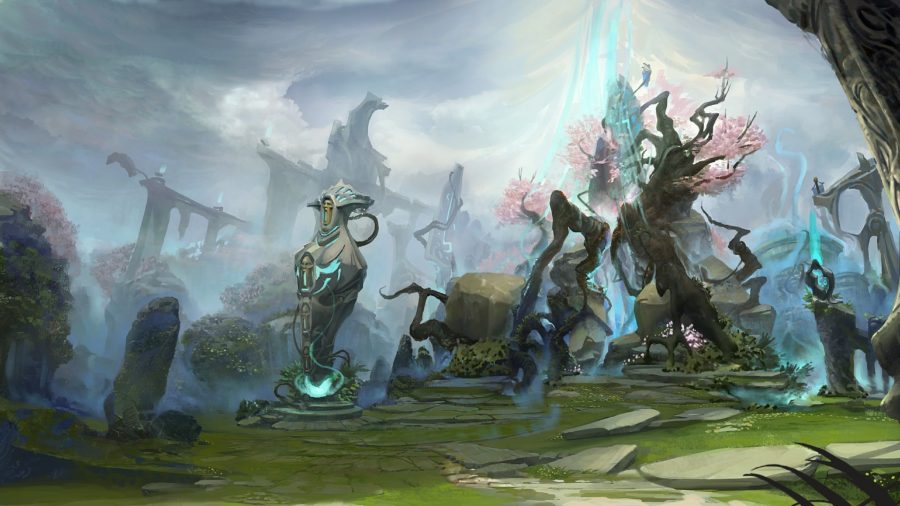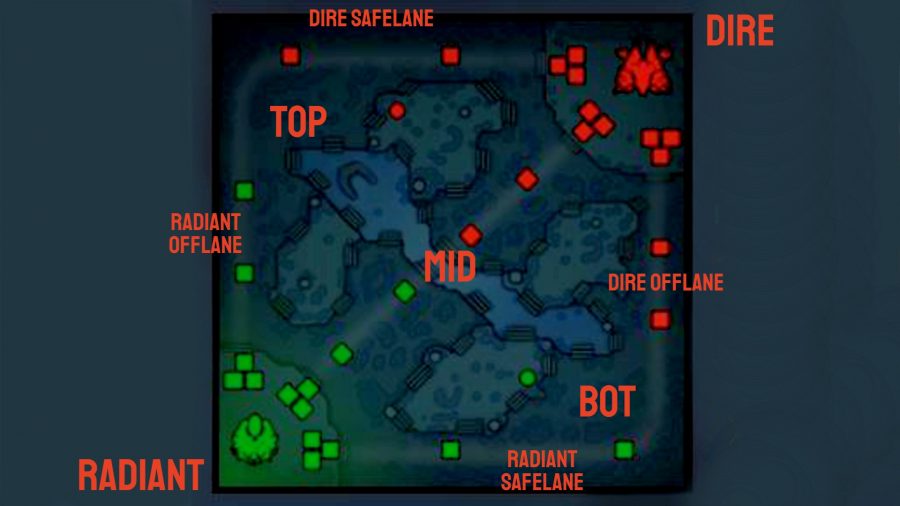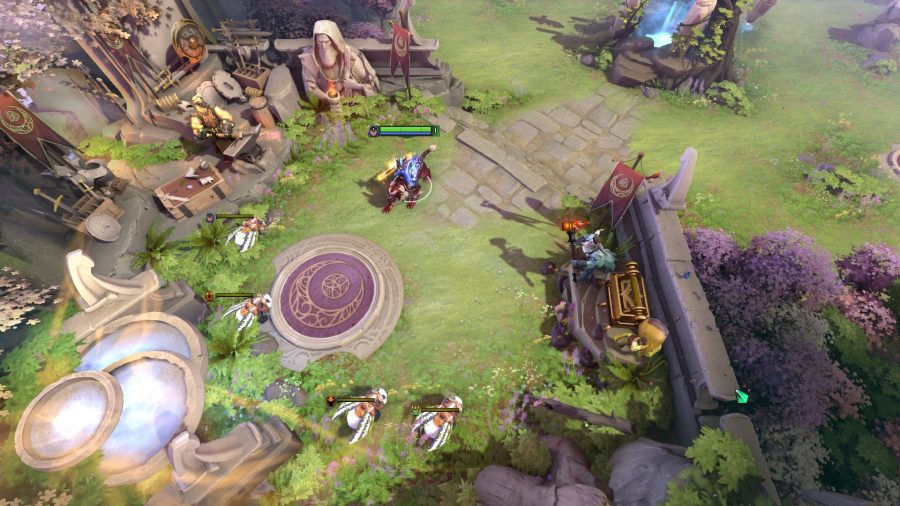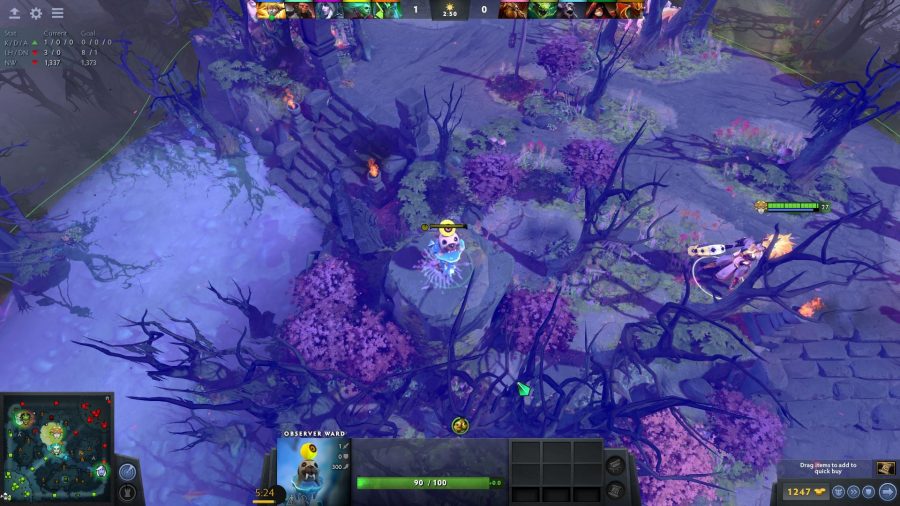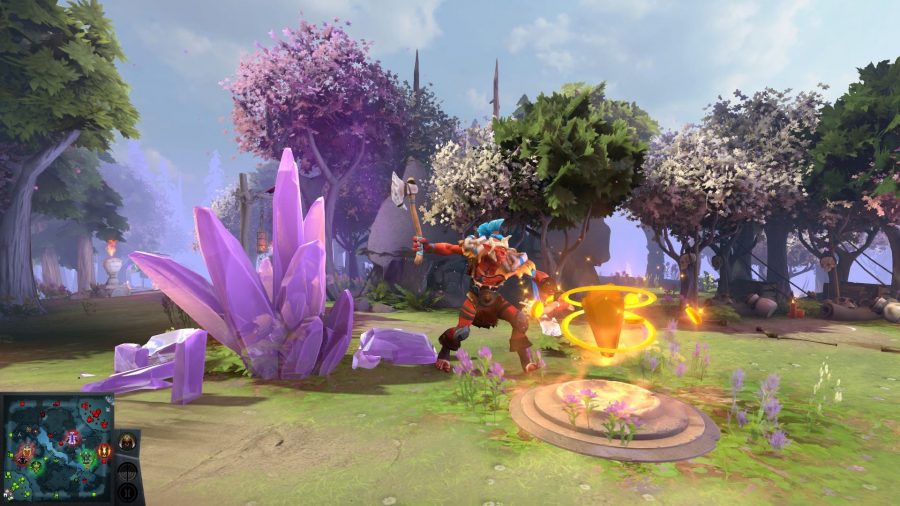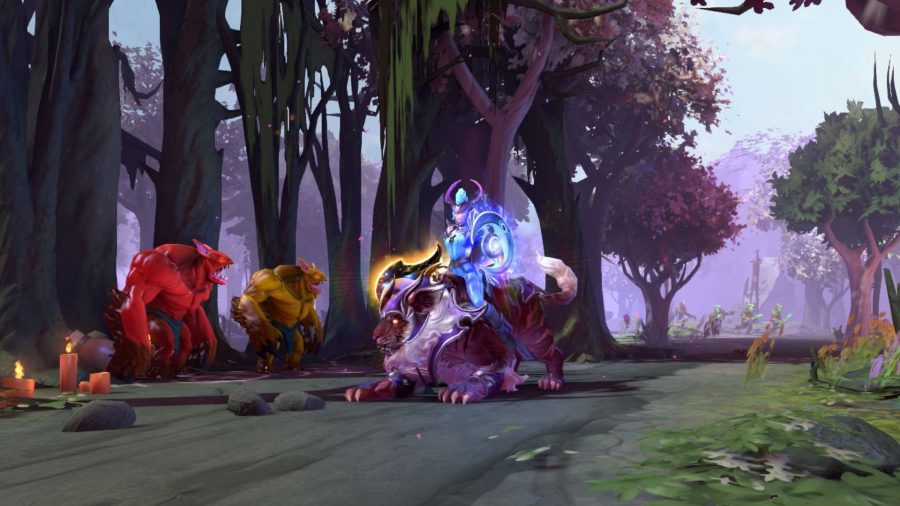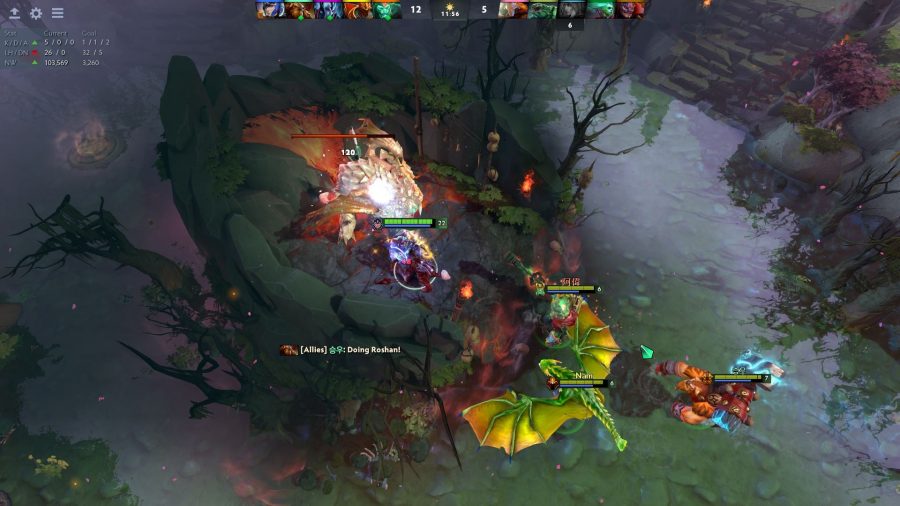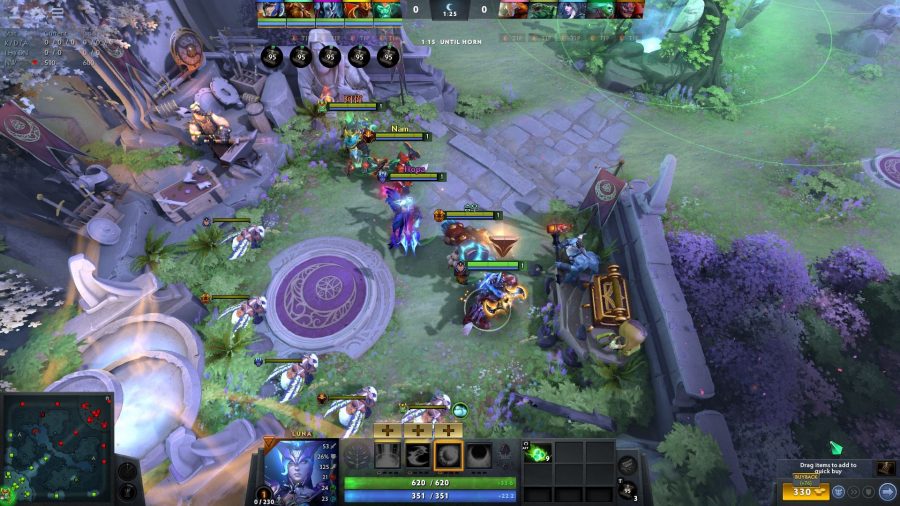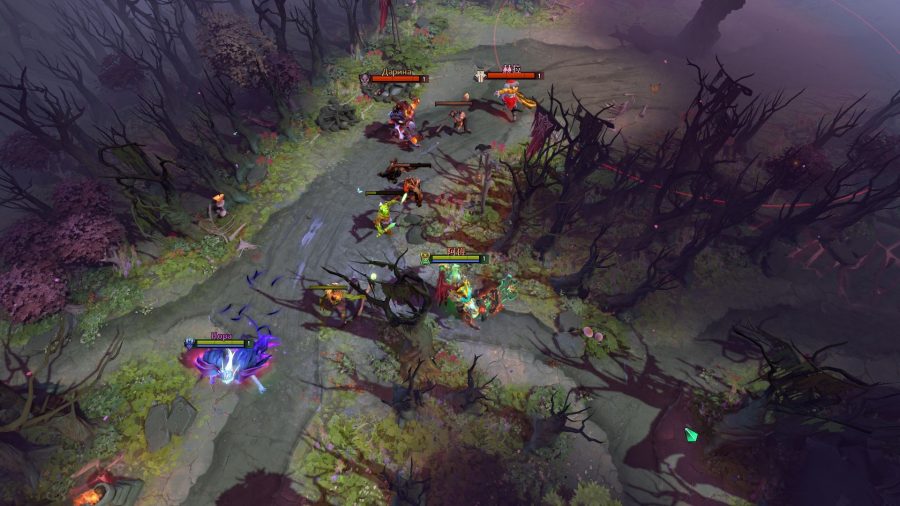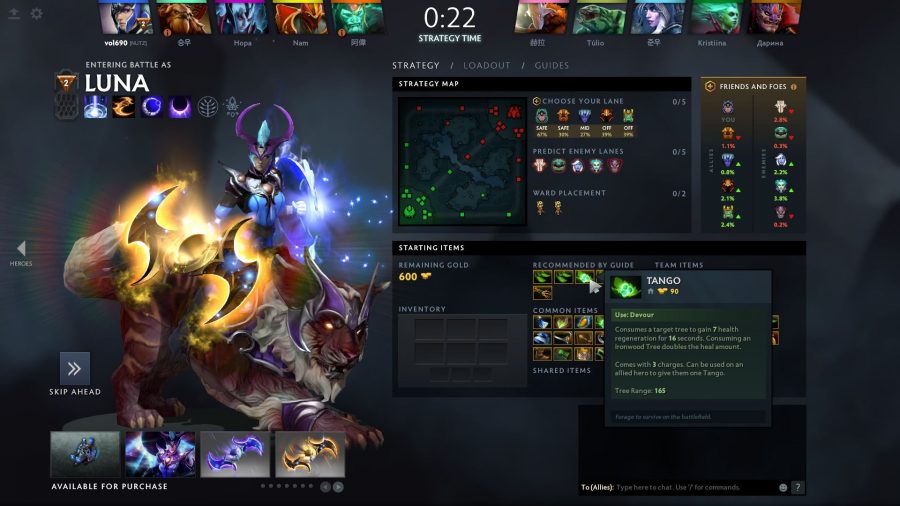Wondering how to play Dota 2? Valve’s MOBA is notoriously one of the most complex games in existence, but don’t let that put you off. No, really – you don’t need to know the intricacies of each hero, how to build all the items, or why skilled players sometimes drop their belongings on the floor on purpose. You can learn as you go, and have fun in the process – promise.
Getting started as a new Dota 2 player is much more welcoming now than it used to be, thanks to a recently revamped new player experience, and a stellar fan-created Dota 2 tutorial, to make your first, wobbly steps as a new Dota 2 player a little easier.
So whether you’re a League of Legends player curious about what goes on in the neighbour’s yard, a recent watcher of the Dota 2 anime looking to stand in the scaly boots of Davion the Dragon Knight, or simply want a better understanding of one of the biggest games in esports, please fasten your seatbelt and keep your arms and legs inside the vehicle at all times – we’re going to learn how to play Dota 2.
What is Dota 2?
Dota 2 is an online multiplayer game where you and four teammates choose from a roster of different heroes and, over the course of each match, gradually grow in strength and power until you’re strong enough to take down the enemy team’s Ancient – the glowing building in their home base.
Of course, the opposing team has their eye on your Ancient, too, and wants to smash it to smithereens. So the whole match is a strategic balancing act, as you decide what you need to do to gain advantage for your team, while also making sure the enemy doesn’t snowball out of control.
Many millions of hours of brainpower have gone into figuring out the optimal ways to do this, so there’s plenty to study – but, crucially, none of your teammates or enemies know how to play optimally, so really, it’s all about punishing your enemies’ mistakes while trying not to make too many of your own.
Dota 2 map
The Dota 2 map is divided into two sides, Radiant and Dire. Radiant is on the left, and it’s a verdant, idyllic paradise. Over the river that runs diagonally from top left to bottom right, you’ll find the Dire lands on the right side of the map, all covered in bugs and stuff.
The map is also split into three lanes – top, middle, and bottom. The area between the lanes contains camps of neutral creeps, and is known as the jungle. Each team has three towers running down their side of each lane, which automatically attack enemy creeps and heroes within a certain radius. We’ll explain what creeps are in a bit, stay with us.
The towers closest to the river are called tier one towers; tier two towers are further back, halfway down the lane, and tier three towers stand at the start of each lane, in your base. There’s also a set of two tier four towers defending the Ancient itself, which sits in the middle of your base.
Tucked back in the bottom left and top right corners is the fountain, which heals your health and mana over time, and rapidly attacks any foes that dare venture inside. This is also where you can find the Base Shop, from which you can purchase most items. You’ll also see your faithful courier hanging out here; if you purchase an item from the shop while you’re away from the base, you can command your courier to haul it all the way to you – just be careful not to put it in harm’s way, as it takes a few minutes to respawn if it dies.
Heroes can teleport to towers and outposts using a TP scroll. You start with one of these, and gain one every time you die. You can purchase more from the shop – try not to get caught without them, as you can also teleport to the fountain when you need to. However, TP scrolls take a certain amount of time to channel, so it’s possible to have your TP cancelled by an enemy if they catch you.
Offlane and safelane
A quick note; your teammates will refer to the top, middle, and bottom lanes very often, but you will also hear the terms offlane and safelane. The top lane is the Radiant offlane and the Dire safelane, and the bottom lane is the Radiant safelane and the Dire offlane. This is because the map is not symmetrical. The safelane is, well, safer, because your team’s tier one tower is closer to where the creeps meet. The offlane is the opposite – the creeps meet closer to the enemy’s tier one tower.
Vision
When discussing the map, it’s important to note that you can’t actually see what’s happening everywhere – only where you have vision. Everything else is covered by the fog of war. Vision is also blocked by trees, and you can’t see up hills. Vision is shared between allies – anything your team can see, you can, too.
Vision is provided by many things, including friendly creeps, heroes, buildings, couriers, and observer wards. Placing observer wards on the map is a crucial part of the game, as they provide vital information to your team. The minimap on the bottom left is a handy way to see, at a glance, which enemy heroes you have vision of, and which are missing from the map, presumably up to no good.
Runes
Runes spawn periodically on the map, and provide bonuses to the player or team that pick them up. There are four rune spots on the map; two in the river, and one in each team’s jungle.
At the start of the game – 0:00 – Bounty Runes, which grant a gold bonus to all teammates, spawn in each rune spot. After this, they spawn in the jungle rune spots only, every three minutes.
At 2:00 and 4:00 minutes into the game, Water Runes spawn at both rune spots in the river. These runes instantly restore 100 health and 80 mana to whoever picks them up.
Power-up runes spawn randomly in one of the two ward spots in the river; they begin spawning at 6:00 into the game and then every two minutes after that.
Day and night cycle
There’s a day/night cycle in Dota, too. During the preparation phase before the start of each match, it’s night-time, until the horn sounds at 00:00 and it becomes day. Then, every five minutes, the map switches from day to night or vice versa. During the night, vision is decreased for the majority of heroes.
Invisibility
Some units are invisible thanks to items or skills, and can only be seen with True Sight, which is provided by towers, items (Sentry Wards, Dust of Appearance, Gem of True Sight) and some hero abilities. Of course, there are also certain abilities that make invisible units immune to True Sight, just to make things even more complica- uh, fun.
Dota 2 Creeps
Creeps – non-hero units – are the main source of gold and experience in the game. When a creep dies, it gives experience to its nearby enemies. Crucially, you only get gold from the creep if you deliver the killing blow, otherwise known as the last hit. You have to watch the health bar carefully and eyeball the exact moment to thwack the creep so you can secure this, which is a skill all on its own. You can also last hit your own friendly creeps to prevent your enemies from getting the money from the last hit, while also halving the experience they get from the creep. This is called denying.
Lane creeps
Lane creeps are allied with each team, and spawn in waves every thirty seconds from the barracks in your base. They charge down their lanes towards the enemy Ancient, and will attack any enemy unit in range. They’re not particularly fearsome, but while you’re weak at the start of the game, you don’t want a whole wave attacking you at once, biting your ankles like a swarm of angry toddlers.
They come in three flavours: Ranged, Melee, and Siege. Siege screeps are catapults that spawn every tenth wave; they have high health and magic resistance and do significant damage to buildings.
If your barracks are destroyed in a particular lane, the opposing team begins to spawn super creeps in that lane. They’re stronger, and grant less gold and exp. Once all your barracks are destroyed, the enemy will spawn mega creeps, which are even harder to take down.
Neutral creeps
Neutral creeps are hostile to both sides. They chill in the jungle (that’s the area between the lanes) minding their own business, watching clouds and munching grass in their camps until some hero comes along and whacks ‘em over the head. Neutral creeps spawn at 01:00 and then respawn if the creep camp is empty at the second the clock hits xx:00, for the rest of the game. There are several different types of neutral creeps that can spawn in each camp. Ancient camps spawn ancient creeps, which are particularly powerful – don’t try taking these down until you’re strong.
Roshan
Roshan is a big ol’ beast hanging out in his own special pit in the middle of the river. He’s a neutral creep, but he’s incredibly difficult to take down, often requiring several heroes to do so in a speedy fashion. When killed, he drops the Aegis of the Immortal, which is an item that grants the bearer a second life; if they die, they are resurrected in place after a short delay. The Aegis expires after five minutes. Roshan also drops additional items depending on how many times he’s been killed already in that game.
Dota 2 heroes
The vast number of available heroes is what ensures every single game of Dota 2 presents a unique challenge. Certain heroes are natural counters to other heroes, and certain heroes are more suited to particular playstyles.
You’ve got melee, ranged, heroes that do high damage with their right-click, and heroes that use spells to devastating effect. As you accumulate experience throughout the game, you level up, and can assign a point to one of your abilities. Every hero has a powerful ultimate that becomes available to skill at level six.
While you’re starting out, we suggest you pick one hero to learn the game with, before branching out. Wondering who to pick? We’ve got a guide to the best Dota 2 heroes for beginners.
Roles
There are five heroes on each team, and there are five different roles that every team needs to cover: two supports (positions four and five), offlaner (position three), mid (position two), and carry (position one). The role you play in each match determines which lane you begin in, and what is expected of you throughout the game.
The position five support begins the game in the safe lane (that’s bottom for Radiant, top for Dire) alongside the position one carry. The position four and the offlaner hang out together in the offlane (bottom for Dire, top for Radiant) and the mid goes… well, no prizes for guessing where.
- The carry hero is the hero that will be spending their time farming powerful items, and have first dibs on the safest and easiest farm on the map. When they get themselves a powerful item, that’s a huge power spike for your team, so that’s a good time to fight.
- The mid hero is the hero that will be given the most experience in the early game, because they start in a lane by themselves. This means they’re in a good place to impact other lanes and exert pressure on the map.
- The offlaner is usually a tanky hero, with abilities and items that benefit the team by initiating fights and providing sustain. In the lane, you want to make things as tough for the opposing carry as possible.
- The position four support is a very adaptable role; after teaming up with the offlaner to bully the enemy carry, they will roam across the map, secure runes, stack camps, and use their abilities to help their teammates or initiate fights.
- The position five support is tasked with looking after their safe lane carry, and ensuring the team has good vision across the map.
Phases of a Dota 2 Match
Early Game
The start of the game is called the laning phase – basically, everyone goes to their assigned lanes, and attempts to secure or deny last-hits on the creeps as they clash together. In each lane, it’s important to focus on last-hitting the creeps over anything else, unless you’re a support, in which case your job is to help out with denying creeps, and to attack the enemies as they try to last hit – this is called ‘harassing’. Any kills you can secure here are great, but they’re not the primary focus.
Mid Game
This is where heroes begin to leave their lanes and move around the map, adjusting to how their respective lanes have panned out. Your carry and mid will hopefully have a few items, and a few towers will probably have been destroyed. What happens here is very dependent on what kind of heroes you and the other team have – you might push aggressively, look for fights, or decide to farm more items.
Late Game
The late game is when your cores are ready to fight, after farming their big items. There’s a lot of teamfighting, and the focus is on major objectives, like taking the final buildings or Roshan.
Dota 2 items
Items are bought from the Base Shop or the Secret Shop. Items must be in one of your six Inventory slots to be active or usable, but you also have a Backpack, with three slots for inactive items; you can swap these in whenever you like, but there is a cooldown before you can use them. You also have a Stash back in the base, which has six slots – items you buy from the Base Shop will go here until you collect them yourself or send a courier to collect them for you.
You also have a separate slot for your TP scroll, and a slot for a neutral item. Dota 2 neutral items drop from neutral creeps in the jungle – you can use any neutral item found by your team, unlike normal items, which typically can’t be used by your allies (apart from some consumables, and wards).
There is no one single correct item build for each hero – the best items for the game vary depending on the particular challenges you face in each match. However, while you’re new to the game, use the suggested item build to get to grips with buying and using items.
You begin each game with 600 gold, and you should use it to kit yourself out with items before the game begins. Your build guide will indicate what you should buy, but in general, you should start with at least a few items to regenerate your health and mana, so you can stay fighting fit for the first crucial creep waves.
Now you’re ready to give it a go yourself – or at least watch professional matches with a newfound appreciation. If playing with other people proves too much for you, here’s the best RTS games on PC – but even if that breaks you out into a cold sweat, there’s always a list of the best relaxing games to retire into.
